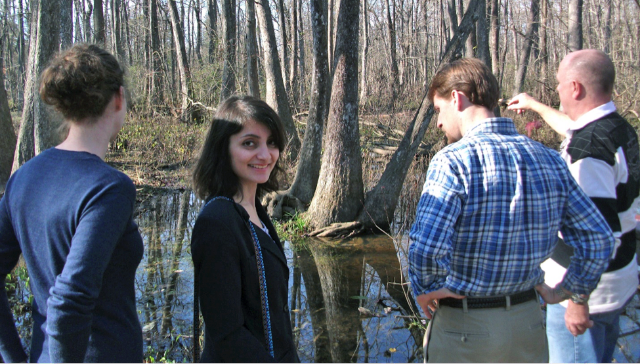Best Summer Festivals in Korea: Water Festival in Jangheung
The past weekend, we were invited to take part in a tour to the towns of Jangheung, Gangjin, Muan and Gwangju on the West Coast. It's somewhere down south in Korea, in the same level as Busan but on the other side of the edge of the peninsula.
After several hours of travel and a few pit stops for a wee-wee break and sustenance replenishment, we finally arrived in Jangheung. Jangheung is a small county in Jeollanam-do that is located near the sea of Boseongman Bay, and by the big lake created by Jangheung Dam and Tamjingang River. We found out that each year, in July, the Janheung Jeongnamjin Aqua Festival is held. We had no idea what to expect, but were handed water guns. What began was one of the largest water fights, and there were huge fire trucks raining water down on us.It was a GREAT way to have fun and cool down in the summer heat.
Advice: For getting wet, bring somewhat covered clothes. No one in Korea gets wet in a bikini, or even swimsuit. Shorts and T-Shirt and towel! That is all you need. No guy is shirtless either, so save the skin for European beaches.

After that, we walked around and there was a pool; canoeing, river obstacles and much more. We didnt have time to do much but by the end of it, we were soaked. Not long after, perhaps another hour, we were in Gangjin. Gangjin is thought to be a must-visit place for exploring the southern provinces as it houses varied historical cultural assets. Goryeo Dynasty, one of the three dynasties in the Thee Kingdom Period. At Gangjin, we mainly visited the Celadon Festival.
Celadon is a kind of ceramic often seen in many Korean museums. The complex techniques of firing and coloring celadon were imported from China around the 9th century and subsequently improved by craftsmen. At this festival, we had a chance to see how celadon pottery is fired and try it ourselves.
There was a really nice parade that took place and we also participated in the water slide!

That night, we also did a "Hanok Stay"in Gangjin. Hanok Stay refers to staying in a traditional Korean house and not only is it a good opportunity to experience traditional Korean life, but to enjoy home cooked food. In our "hanok", it didn't look too traditional, as the house had a massage chair. Additionally, we had a sofa and bed to our disposal. We were fed amazing Korean food!

We were lucky that the other couple with us could speak Korean so we managed to get by!
The next day, Sunday, we made our way to the city of Muan. Muan is the capital of Jeollanam-do, South Korea but didn't look like much was happening there. There, we visited the Muan Ecological Tidal Flat Center. Mud flats are basically coastal wetlands which are under the water in high tide, but are exposed in the air in low tide. Since Jeollanam-do has a long coast from the Yellow Sea to the south sea, it so follows that it has great mudflats. Muan is a Ramsar Convention wetland, and famous for small octopuses and Deukryang bay where is a repository of tideland’s living creatures.
At Muan, we had the chance to walk out along the sprawling mud flats and catch glimpses of, and learn all about, the various creepy crawlies that inhabit this unique ecosystem.

We saw the crabs in display. They were white sand crabs, very well camouflaged in the background. They are also a bit like Fiddler crabs in that they have one claw visible and the other was too tiny (or perhaps not there?)
From there, we went to Gwangju, which is the sixth largest city in South Korea. It is a designated metropolitan city under the direct control of the central government's Home Minister. The city was also the capital of Jeollanam-do until the provincial office moved to the southern village of Namak in Muan County in 2005. There, we stopped at Boribap Street for lunch. The street is named after Boribap, which is a barley rice topped with an overwhelming range of fresh sautéed vegetables, red chili paste and sesame oil. Eating barley rice has a handful of health benefits, including good digestion and weight control.
Well, it wasn't over. We made our way to the Penguin Village. The entrance is quite unassuming...
But then, once side, you see that the neighbourhood has alot of character. It is said to be unchanged since the 70s and 80s. It is named this because it is believed that the old people in the neighbourhood walk like this.
Its a great photo opp place, with some quaint pictures on the wall. Does anyone know the deal with why there are so many fish?
After the Penguin Village, we visited the Gwangju National Museum. It is a large, six story building with two stories above ground and four basement floors. We were there for only 30 minutes so sifted through the various historical artifacts, most of which were found in Jeolla region. There were many relics related to Buddhism and earthenware during Baeje, unified Silla, Goryeo, and Joseon dynasties; and some underwater discoveries from Sinan shipwreck. There was also lots of Celadon displayed here too! We didn't stay too long, and then headed back home to Seoul, but certainly, its something to spend more time at.











0 comments